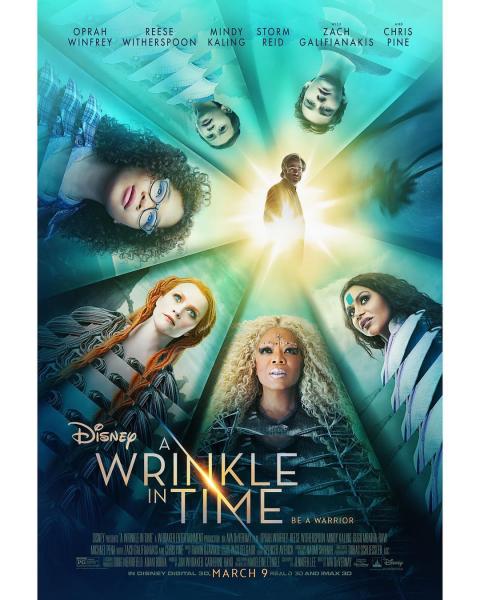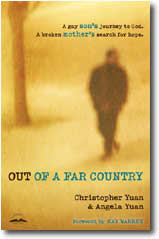
Movie Wrinkle in Time: Best Way to Update (Hijack) a (Fairly) Christian Classic
According to Catherine Hand, the Producer of A Wrinkle in Time, “We had to take the essence of the emotional story—e.g., why did this happen in the book?—and explore how to give it a new look but with the same meaning…We all loved the themes, the characters—the essence of the story. And I hope audiences will agree that we stayed true to that essence.”
Hand was friends with L’Engle so I had hopes that she would have honored the author’s intent. But this is one audience member who would have to regretfully disagree. This production team could write a book on how to update a movie and hijack the meaning by…
Keeping the same wonderful characters and plot tension that the author created.
Meg, played by Storm Reid, the brilliant but uniquely different, barely high-school girl who is floundering over the unexplained disappearance of her brilliant scientist Dad two years earlier. She is losing interest in her studies and confidence in her appearance and self-worth. At school she answers the mean-girl bullies with uncharacteristic physicality.
Charles Wallace, her seriously precocious 5-year old brother who, if you watched Star Trek Next Gen, is a total empath, able to see and feel deeply into others’ thoughts and feelings. He tries to fly beneath radar at school by mostly keeping quiet.
Mrs. Murray, her Mom, knock-out gorgeous biochemist who is holding down the family fort, but weeps over her husband’s absence when she thinks the kids are not looking.
Mr. Murray, her father, a physicist who worked on a secret project with NASA and Princeton before he disappeared. Many believe that he made off with another woman, adding shame to the family’s heartbreak. Actually he managed to “tesseract,” move successfully through a wrinkle in time.
But he has been imprisoned on the planet Camazotz, battling the evil IT who is trying to assimilate his mind and heart into complete submission. All must conform to IT's directives and scheduling. The people of Camazotz live like mind-numbed robots. His cries for deliverance have been heard by…
Mrs. Whatsit, Mrs. Who and Mrs. Which, played by Reese Witherspoon, Mindy, Kaling and Oprah) celestial beings who appear to the children, help them “tesseract” to Camazotz and give them gifts, intel and encouragement to rescue their Dad.
Calvin, a very popular, good looking guy from school feels prompted to befriend Meg and joins their rescue op. His stellar communication skills are a great asset to the team.
But erasing from the screenplay all the many Bible verses in the book
Mrs. Which sets up the basic conflict of life in the context of a Christian worldview. Sort of. She describes a battle between the fighters for the light and the Powers of Darkness. “All through the universe it’s being fought, all through the cosmos, and my, but it’s a grand and exciting battle…some of our very best fighters have come right from your own planet.”
Who? the children ask. “You must know them,” she responds.
Mrs. Who drops a clue grounding “the light” in John’s great gospel prologue about Jesus, “And the light shineth in the darkness; and the darkness comprehended it not.”
“Jesus,” Charles Wallace guesses.
“Why, of course Jesus,” she responds. To which she adds, “All your great artists…”
The children round out the list with Da Vinci, Michaelangelo, Shakespeare, Bach, Pasteur, Curie, Einstein, Schweitzer, Ghandi, Buddha, Beethoven Rembrandt, St Francis, Euclid, Copernicus…
As you might guess from this list of fighters, many Evangelicals have regretted that L’Engle lumped Jesus in with the other warriors. While L’Engle said, “I can understand God only through one specific particular, the incarnation of Jesus of Nazareth,” her rather Universalist texts like this one opened the door for others, including Hand, to change her story. In the movie Jesus doesn’t even make the list. But Nelson Mandela and Maya Angelou do.
Other texts that were stripped include…
…Calvin falling to his knees before Mrs. Whatsit’s magnificent materialization into something like a centaur. “No,” [she] said…“Not to me, Calvin. Never to me. Stand up…’Let the wilderness and the cities thereof lift their voice; let the inhabitants of the rock sing, let them shout from the top of the mountains. Let them give glory unto the Lord! (Isa 42:11)’”
…her father telling Meg, “And we know that all things work together for good to them that love God, to them who are called according to his purpose (Rom 8:28).”
…Aunt Beast telling Meg, ” We are the called according to His purpose, and whom he calls, them He also justifies.” Of course we have help…Good, the stars, light, love…”We look not at the things which are seen but at the things which are not seen. For the things which are seen are temporal. But the things which are not seen are eternal” (2 Cor 4).
…”The foolishness of God is wiser than men; and the weakness of God is stronger than men. For ye see your calling, bretheren, how that not many wise men after the flesh, not many mighty, not many noble are called, but God hath chosen the foolish things of the world to confound the things which are mighty. (1 Cor 1:27).
Take out these verses and how have you changed the story?
You have removed the prime mover, the author of the Story of Life: In the book it’s the God of the Bible. The One to whom we owe honor and praise. The One who created, calls and helps us, working for the good of those who love him.
In the movie the prime mover becomes an impersonal “Universe,” saluted and invoked in Yoga positions, palms up, fingers touching.
In the book, God is the giver of our strength and talents. “We can’t take any credits for our talents. It’s how we use them,” Mrs. Whatsit says. He calls us and justifies us.
In the movie the emphasis is on being one with the universe and the energy people create with either positive or negative thoughts. Meg is told that she struggles because she is not one with the Universe or herself.
In the book the celestial beings are “Angels! Guardian Angels! Messengers! Messengers of God!” But in the movie they are “our guides come down.”
The biggest way that the story’s meaning changes is the way the story’s conflict is resolved
By erasing a personal God with agency from the story, the movie implies that Meg alone has all she needs within herself to deliver her Father and Charles Wallace from the evil power of IT. She just needs to connect with the Divine within.
In the book she relies on the truth that she is loved. “Mrs. Whatsit said to remember that she loves me. That’s what I have to think about. Not about being afraid. Or not as smart as IT. Mrs Whatsit loves me. That’s quite something, to be loved by someone like Mrs. Whatsit.”
As she tries to persuade Charles Wallace to leave the clutches of IT she becomes angry and so lost in hatred she also begins to be lost in IT.
“Mrs. Whatsit hates you,” IT says through Charles Wallace. A fatal mistake. Meg remembers, “Mrs. Whatsit loves me.” Love. She could love CW. So she cries out to her brother telling him all the ways he is so dear to hear. Finally he falls sobbing into her arms.
In the movie, she focuses on how “she deserves to be loved by Charles Wallace” and how much she loves him. No need to focus on how she is loved by someone close to God. Just the realization that she is worthy of love. And she wills to love her corrupted brother.
When Calvin welcomes her back to safety he cries, “We did it!” She corrects him, “I did it.” Before she returns home she lingers in the experience of being one with the Universe. And once she is home she whispers a “Thank you” to the Universe. Or perhaps the guides.
The song lyrics that play as the credits roll emphasize her transformation: I believe in me!! A rainbow tells her she can do anything. I will. I can. I am. No fear.
How opposite from the message of the gospel: We are loved by a God who died for us that we, who are foolish and weak, might live and love in his power, not our own.
The great irony of the movie is that the power of evil squeezes everyone into its mold. All become the same and lose their individuality. The ultimate message of the movie is eerily similar: Become one with the Universe. Turn inside. Away from your individuality. Become one with the all.
But where is love in that invitation? Love yourself? Love your own divine spark? As Chesterton said, “Love desires personality.” Real love cherishes the other. Takes delight in the other individual’s presence, their laughter, their tears, their triumphs their fears. Just as the Lord Jesus delights in you. Cherishes me.
L’Engle died in 2008. She said of A Wrinkle in Time, “I would like it to be made into a movie, but a good movie, not a bad one. I believe my books…And I’d rather not have them done than have them come out and say something I’m not saying, which is very easy in the world of Hollywood.” For Madeline, Wrinkle was a deep affirmation of her faith and her hymn of praise to God. Catherine Hand truly believes that she honored her meaning.
Hmmm…We have everything we need inside…We need Jesus…Can two opposites mean the same thing? For all its stellar cast and special effects, the boldly Christian film I Can Only Imagine beat it at the box office this past weekend.



